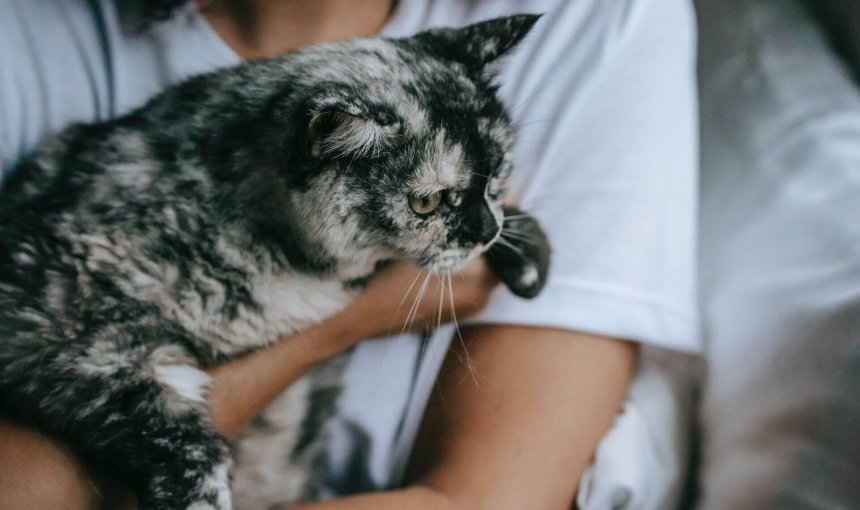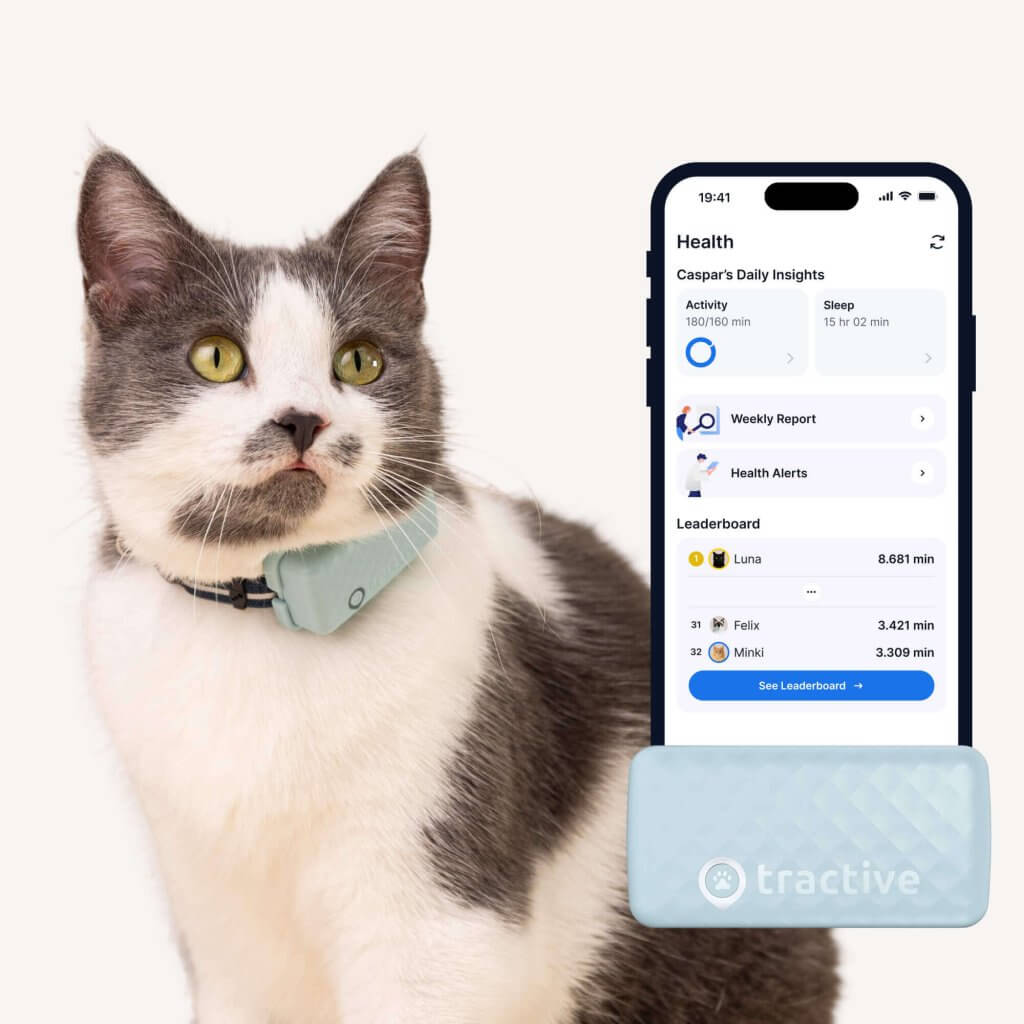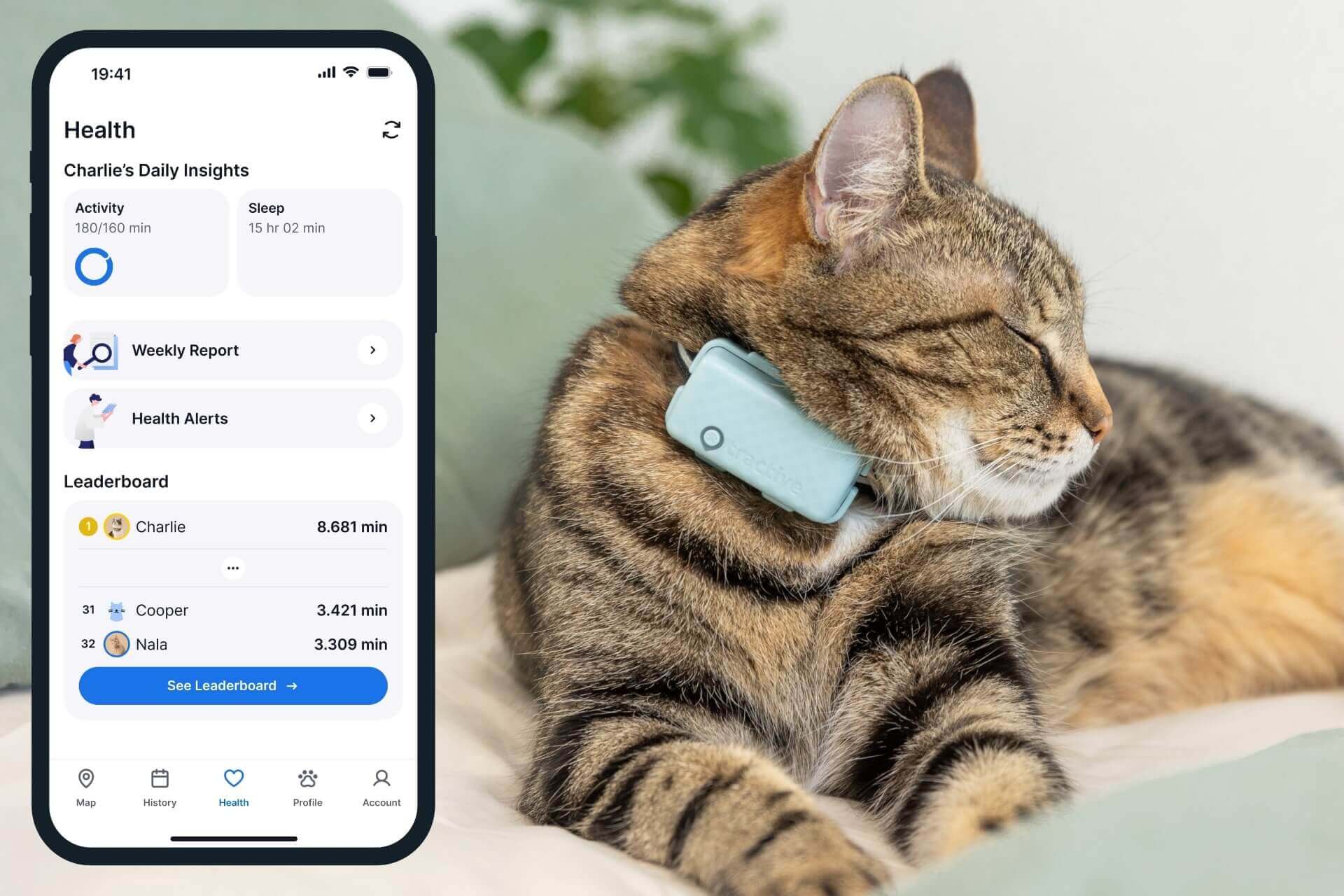UTI in Cats: How To Spot The Signs & Take Action Early
Feline UTIs might be rare - but they're easy to miss. Here's what to watch out for.

Cats tend to mask illness until the very last minute – which is usually by the time they’ve gotten a lot worse. So here’s one stealthy health condition you should keep an eye out for: urinary tract infections (UTIs). Here are all the signs of UTIs in cats and how a drop in your cat’s activity can help you catch on to it faster.

Find out where your cat spends their time.
Read moreWhat are UTIs in cats? Risk factors explained
While uncommon, cats (like humans) are also vulnerable to UTIs. Usually, these occur when bacteria infiltrates any part of their urinary system. This includes their bladder, urethra, or kidneys.1 In fact, feline lower urinary tract disease (FLUTD) is a common medical condition cats might experience. Cats of all ages and breeds are vulnerable to UTIs, though a 2020 study found that2:
- Castrated male cats in general were at a higher risk of developing urinary tract problems.
- Older cats might be more vulnerable to UTIs, especially due to their higher risk of chronic kidney disease.
- Overweight cats might be at higher risk of developing urinary difficulties as well, likely due to being more sedentary and drinking less water.
- Non-spayed female cats are less likely to develop urinary problems like FLUTD.
- Older female cats are more vulnerable to diabetes mellitus (or when their blood sugar is too high.) This can also increase their vulnerability to contracting a UTI.
In general, low activity and reduced hydration can increase these risk factors.
What might cause a UTI in cats?
UTIs in cats can arise from various factors, including:3
- Bacterial infections
Especially when bacteria enters your cat’s digestive system. From here, they might enter your cat’s urinary tract. - Urinary stones
These form as a result of minerals and other substances combining together in your cat’s bladder. In fact, cats with bladder stones might develop recurring UTIs.5 - Abnormalities in your cat’s urinary tract
Like urethral strictures, which can make it difficult for your cat to fully relieve themselves. This increases the risk of bacterial infections.6 At times, injuries to your cat’s spinal cord might also increase the risk of developing FLUTD. - Stress
Like in humans, stress can weaken your cat’s immune system and affect their urinary habits. - Other medical conditions
For example, older cats who are vulnerable to diabetes mellitus might be more likely to develop them. Similary, cats with hyperthyroidism (or an overactive thyroid gland) might experience similar symptoms. - Your cat’s drinking habits
If your cat suddenly seems to be drinking too much water, it might be a sign they’re struggling with a UTI.
Signs & symptoms of UTI in cats
Changes in urinating behavior
- Your cat might make frequent visits to the litter box – more than usual.8
- In other cases, they might strain or even cry out while urinating.
- With some UTIs, your cat might be unable to urinate due to urinary stones, which can be deadly.9 Make sure to keep an eye out if you see your cat going in and out of their litter box, but don’t seem to be producing much urine.
- Your cat might also experience incontinence, or being unable to control urine when it comes out.
- If your cat is peeing in places outside of their litter box and elsewhere around your house, it might be a sign they’re experiencing bladder discomfort.
Your cat’s urine might include blood (giving it a red or brown hue) or a dark, cloudy texture. The smell might also be worse than before, often difficult to hide under their litter box. If you’re noticing any of these signs, get in touch with your local vet immediately.
Other physical symptoms
In some cases, you might observe your cat with a swollen, tender abdomen.11 In other cases, they might even develop a fever and/or vomiting. If you’ve noticed any of these signs, along with changes in your cat’s urinating behaviors, get in touch with your local vet immediately.
Changes in your cat’s behavior
Like if your cat seems more lethargic or withdrawn than usual. It might indicate that they’re struggling to deal with their illness themselves. Cats struggling with illness might also seem more agitated and irritable. Finally, watch out for changes in your cat’s appetite and appearance. For example, your cat might groom themselves excessively – licking their genital areas to relieve some discomfort.
💡A smart cat collar with built-in Health Monitoring can keep track of your cat’s activity levels – and alert you if there’s a weird drop. (Which could signal illness or lethargy.) So you can catch on to a potential illness early and get your cat to a vet much in advance.

Get health alerts for your cat
Our cats can’t always tell us if something’s wrong. But if their tracker detects unusual changes in their routine, you’ll get an alert, helping you catch potential issues early.
Diagnosing UTI in cats: What to expect at your vet visit
If you’ve noticed your cat showing one or more the above mentioned symptoms, drop a call to your local vet for a proper diagnosis. They may ask you detailed questions about your cat’s:
- Diet
- Activity level
- Sleep
- Medical history
- Whether they’re experiencing any stress
- How much water your cat has been drinking
- How frequently and how much they urinate
- How their urine looks
- Any other behavioral changes
Besides these, your vet might run a few tests to get a proper diagnosis.12 These include:
- A urinalysis
Which is where your vet might take a urine sample from your cat to check for the presence of blood, bacteria, sugar, proteins, ketones, or crystals that indicate the presence of bladder stones. - An inspection of your cat’s urine culture
To check whether infection-causing bacteria are present. This will help your vet determine the right course of treatment. - Imaging
Through an X-ray or ultrasound to check for any urinary abnormalities, which might increase the likelihood of a UTI.
Treating & managing your cat’s urinary problems
A typical UTI inspection at your vet might take 3-5 days for the results to emerge. So in the meantime, your vet might prescribe you some treatment options to manage your cat’s symptoms. Including:
- Antibiotics
- Pain relievers
- Flushing procedures, to help your cat pass any small stones.
- Fluid therapy, including making sure your cat is drinking enough water. (To flush out any bacteria from their systems and prevent recurring infections.)
- Dietary changes, especially if your cat’s urine includes crystals. (Which indicate stones.) For example, eating canned food can help your cat stay hydrated and help any stones dissolve by themselves within 2-4 weeks.
- Hospitalization in serious cases, like if your cat’s UTI has spread to its kidneys or if your male cat is facing a urinary blockage.18
How to prevent your cat from developing UTIs
- Make it easy for your cat to stay hydrated
Provide plenty of clean, fresh water sources throughout your house – and also near where they sleep and spend their time. Think water bowls or even fountains to keep them hydrated. (Especially in the warmer months.) - Be mindful of your cat’s behaviors
One of the most common signs of a UTI is if your cat begins to urinate outside of their litter box, or visit their litter box multiple times a day without urinating much. Make sure to be extra vigilant if you have a male cat. - Consider wet cat food brands
Opt for vet-approved wet cat food brands.19 These are small, sneaky ways you can get your cat to stay hydrated (and healthily-fed) throughout the day. - Help your cat de-stress
Build a safe, calm environment full of toys to help your cat get some exercise, scratch posts to let out some energy, safe indoor plants, and plenty of space where your cat can retreat. Keep their litter box in a quiet, accessible area where they have a little privacy. - Stay on top of your vet visits
Even a routine checkup can help you identify the signs and symptoms of a UTI early on – so you can take action right away. - Keep an eye on your cat’s activity level
A weird drop can signal your cat might be struggling with sickness or pain. With a Tractive smart tracker, you can monitor your cat’s active minutes with just a glance at your phone – and take action early on. With this data at hand, you’ll find it easier to have a more productive conversation with your vet.




